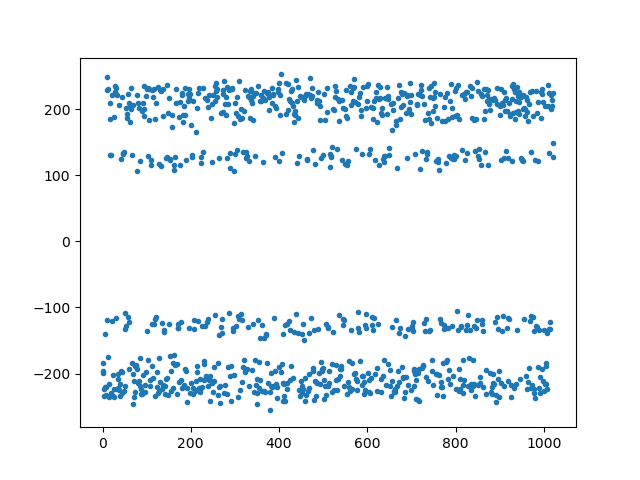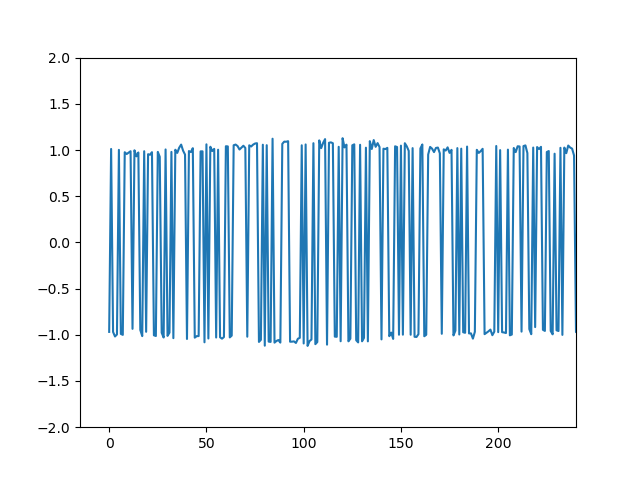The spreading code for what appears to be the pilot component of Xona's X1 signal is shown here:
After carrier wipeoff, the signal is sampled at 1.023 MHz and coherently integrated for 800 ms. The code chips are clearly apparent, and they have a 4-level structure because of the FQPSK modulation. After slicing, the spreading code (modulo a sign ambiguity) in hexadecimal is:
0038ec4d442b85abe805542f16e694c29cc0d5666b058f726eb211519888c562f848f3b5a65dd2d1674fd6d0439c89e1b1a779018e56bded20a3a378255d098c1f1b534347d499e522ea05c646b97e6ddf64b0ca9e8973d808e1f893aecdf2d841d52f5fd2430ee04e295e64f9fe49450f56f4d9f76fdff6d96506706e2078fe
Using this code, weaker signals can now be acquired and tracked. It is not a Gold code; I don't know how it is derived.
Wiping off the spreading code reveals the secondary code with period 100 ms:
0100010011110111001011100110010010111111011100011010111010001100111111101111100101001000011110000001
Approximate values of the Doppler and Doppler rate were derived from the space-track.org orbit. Since the satellite is in LEO, the Doppler is quite high compared to MEO satellites, and even the Doppler rate is significant over the 800 ms interval. Chip alignment was obtained by trial and error, and the 1 ms alignment can be found by watching for near-zero-correlation remnants at the edges and then removing them by correcting the offset. (A small code misalignment would not do much harm, but it's nice to try to get all 1023 chips correct.)
Incidentally, the chipping rate and code length are mentioned in an ION GNSS+ abstract [1] but nowhere else that I know of. Since it's the same as GPS C/A, it would be a natural first guess, but this brief mention in the literature at least serves to remove one set of variables.
The 800 ms recording is linked below. See the previous blog post for details (sampling rate, center frequency, etc.).
http://pmonta.com/data/xona-20250807-191936.iq
I have found a few whispers of L5 power near 1216 MHz that occur at the same time as a satellite pass. From the FCC filing I was expecting a 10 Mchip/s signal centered at 1191 MHz, so I'm not sure what to make of this. Its double-sided bandwidth is around 400 kHz, so again a narrowband signal.
References
| [1] | "World’s First Authenticated Satellite Pseudorange from Orbit", Jason Anderson, Xona Space Systems. https://www.ion.org/gnss/abstracts.cfm?paperID=16052 |


